Por favor, use este identificador para citar o enlazar a este item:
http://hdl.handle.net/10261/173480COMPARTIR / EXPORTAR:
 SHARE
BASE SHARE
BASE
|
|
| Visualizar otros formatos: MARC | Dublin Core | RDF | ORE | MODS | METS | DIDL | DATACITE | |

| Campo DC | Valor | Lengua/Idioma |
|---|---|---|
| dc.contributor.author | Tronchoni, Jordi | es_ES |
| dc.contributor.author | Curiel, José Antonio | es_ES |
| dc.contributor.author | Sáenz-Navajas, María-Pilar | es_ES |
| dc.contributor.author | Morales, Pilar | es_ES |
| dc.contributor.author | De-La-Fuente-Blanco, Arancha | es_ES |
| dc.contributor.author | Fernández-Zurbano, Purificación | es_ES |
| dc.contributor.author | Ferreira, Vicente | es_ES |
| dc.contributor.author | González García, Ramón | es_ES |
| dc.date.accessioned | 2018-12-20T13:23:48Z | - |
| dc.date.available | 2018-12-20T13:23:48Z | - |
| dc.date.issued | 2018-04 | - |
| dc.identifier.citation | Food Microbiology 70: 214-223 (2018) | es_ES |
| dc.identifier.issn | 0740-0020 | - |
| dc.identifier.ismn | 10.1016/j.fm.2017.10.008 | - |
| dc.identifier.uri | http://hdl.handle.net/10261/173480 | - |
| dc.description.abstract | The use of non-Saccharomyces strains in aerated conditions has proven effective for alcohol content reduction in wine during lab-scale fermentation. The process has been scaled up to 20 L batches, in order to produce lower alcohol wines amenable to sensory analysis. Sequential instead of simultaneous inoculation was chosen to prevent oxygen exposure of Saccharomyces cerevisiae during fermentation, since previous results indicated that this would result in increased acetic acid production. In addition, an adaptation step was included to facilitate non-Saccharomyces implantation in natural must. Wines elaborated with Torulaspora delbrueckii or Metschnikowia pulcherrima in aerated conditions contained less alcohol than control wine (S. cerevisiae, non-aerated). Sensory and aroma analysis revealed that the quality of mixed fermentations was affected by the high levels of some yeast amino acid related byproducts, which suggests that further progress requires a careful selection of non-Saccharomyces strains and the use of specific N-nutrients. | es_ES |
| dc.description.sponsorship | This work was supported by grants MINECO/FEDER RTC-2014-2186-2 (SOUNDWINE) developed in collaboration with Agrovin S.A., and AGL2015-63629-R, and EU project YeSVitE. (7FP-IRSES-GA n° 612441). JAC and PSN are the recipients of a MINECO Formación Postdoctoral contract from the Spanish Government. | es_ES |
| dc.language.iso | eng | es_ES |
| dc.publisher | Elsevier | es_ES |
| dc.relation | info:eu-repo/grantAgreement/MINECO/Plan Estatal de Investigación Científica y Técnica y de Innovación 2013-2016/RTC-2014-2186-2 | es_ES |
| dc.relation | info:eu-repo/grantAgreement/MINECO/Plan Estatal de Investigación Científica y Técnica y de Innovación 2013-2016/AGL2015-63629-R | es_ES |
| dc.relation | info:eu-repo/grantAgreement/EC/FP7/612441 | es_ES |
| dc.relation.isversionof | Postprint | es_ES |
| dc.rights | openAccess | en_EN |
| dc.subject | Reduced alcohol wine | es_ES |
| dc.subject | Aerobic fermentation | es_ES |
| dc.subject | Non-Saccharomyces | es_ES |
| dc.subject | Sensory analysis | es_ES |
| dc.title | Aroma profiling of an aerated fermentation of natural grape must with selected yeast strains at pilot scale | es_ES |
| dc.type | artículo | es_ES |
| dc.description.peerreviewed | Peer reviewed | es_ES |
| dc.relation.publisherversion | https://doi.org/10.1016/j.fm.2017.10.008 | es_ES |
| dc.embargo.terms | 2019-04-01 | es_ES |
| dc.rights.license | http://creativecommons.org/licenses/by-nc-nd/4.0/ | - |
| dc.contributor.funder | Ministerio de Economía y Competitividad (España) | es_ES |
| dc.contributor.funder | European Commission | es_ES |
| dc.relation.csic | Sí | es_ES |
| oprm.item.hasRevision | no ko 0 false | * |
| dc.identifier.funder | http://dx.doi.org/10.13039/501100003329 | es_ES |
| dc.identifier.funder | http://dx.doi.org/10.13039/501100000780 | es_ES |
| dc.type.coar | http://purl.org/coar/resource_type/c_6501 | es_ES |
| item.grantfulltext | open | - |
| item.cerifentitytype | Publications | - |
| item.openairecristype | http://purl.org/coar/resource_type/c_18cf | - |
| item.languageiso639-1 | en | - |
| item.fulltext | With Fulltext | - |
| item.openairetype | artículo | - |
| Aparece en las colecciones: | (ICVV) Artículos | |
Ficheros en este ítem:
| Fichero | Descripción | Tamaño | Formato | |
|---|---|---|---|---|
| Tronchoni et al rev2.pdf | Article | 180,11 kB | Adobe PDF |  Visualizar/Abrir |
| Figure Captions.pdf | Figure captions | 22,43 kB | Adobe PDF |  Visualizar/Abrir |
| Figure 1.pdf | Figure 1 | 197,07 kB | Adobe PDF |  Visualizar/Abrir |
| Figure S1.pdf | Figure S1 | 57,47 kB | Adobe PDF | 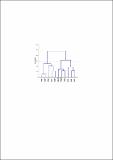 Visualizar/Abrir |
| Figure 2 rev2.pdf | Figure 2 | 49,15 kB | Adobe PDF | 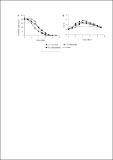 Visualizar/Abrir |
| Figure 3.pdf | Figure 3 | 55,03 kB | Adobe PDF | 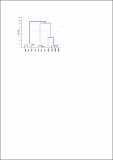 Visualizar/Abrir |
| Figure 4.pdf | Figure 4 | 91,41 kB | Adobe PDF |  Visualizar/Abrir |
| Figure 5.pdf | Figure 5 | 49,9 kB | Adobe PDF | 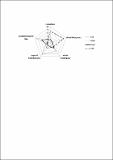 Visualizar/Abrir |
| Figure 6.pdf | Figure 6 | 59,87 kB | Adobe PDF | 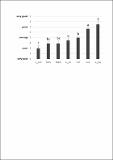 Visualizar/Abrir |
| Figure 7.pdf | Figure 7 | 93,39 kB | Adobe PDF | 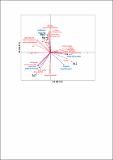 Visualizar/Abrir |
| List S1 References Table 6.pdf | Table List | 46,28 kB | Adobe PDF | 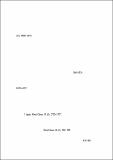 Visualizar/Abrir |
| Table 1.pdf | Table 1 | 25,86 kB | Adobe PDF |  Visualizar/Abrir |
| Table 2.pdf | Table 2 | 32,92 kB | Adobe PDF |  Visualizar/Abrir |
| Table 3.pdf | Table 3 | 50,45 kB | Adobe PDF |  Visualizar/Abrir |
| Table 4.pdf | Table 4 | 12,07 kB | Adobe PDF |  Visualizar/Abrir |
| Table 5 rev2.pdf | Table 5 | 15,75 kB | Adobe PDF |  Visualizar/Abrir |
| Table 6.pdf | Table 6 | 63,27 kB | Adobe PDF |  Visualizar/Abrir |
CORE Recommender
Page view(s)
441
checked on 15-abr-2024
Download(s)
1.630
checked on 15-abr-2024
Google ScholarTM
Check
Este item está licenciado bajo una Licencia Creative Commons

